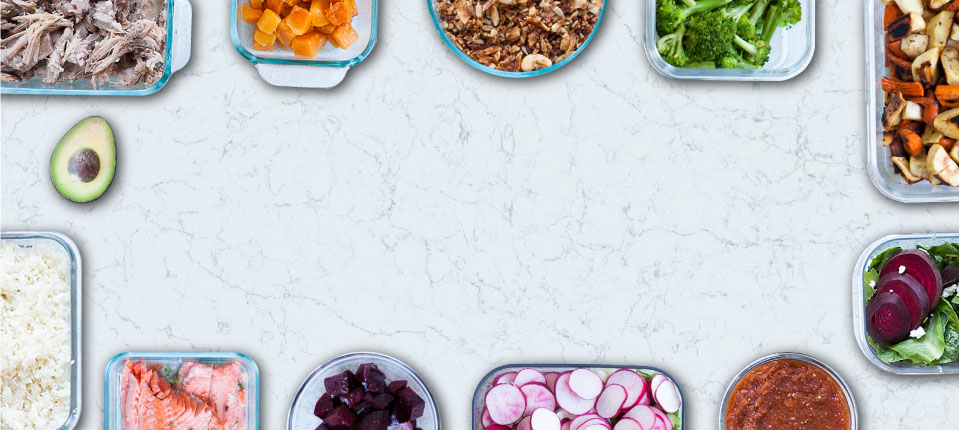You’ve decided to try the AIP diet to see if it can resolve health issues you’ve been having. The list of foods you can no longer eat, at least for a while, can be overwhelming – for example no grains, eggs, nuts, or seeds. And then you realize many spices we use are a nightshade or seed, from black pepper to hot chiles.
Fear not, however, you are not limited to eating bland meals for the rest of your life. With some creativity, you can still have plenty of AIP flavor.
Common flavors
While seeds and nightshades aren’t allowed on a strict AIP diet, you can still use leaves, flowers, roots, and bark.
First, a list of AIP herbs and spices you probably already know and don’t need much explanation.
You can still use basil, bay leaves, chives, cilantro/coriander leaves, cinnamon, cloves, dill weed, garlic, ginger, onion powder, parsley, mints, marjoram, rosemary, sage, thyme, and vanilla bean.
Have you tried these?
There are many more AIP friendly herbs and spices that you might not use on a regular basis, but many of them have been or are still fairly common and easy to find.
Mace: wildly popular through the Middle Ages in Europe, mace is now much less known. It is actually part of the same plant as nutmeg. Because nutmeg is a seed, it’s a no-no on AIP. Mace, on the other hand, is a web-like covering over the nutmeg seed. It is similar in taste to nutmeg, but somewhat lighter. Replace nutmeg in recipes with mace.
Tumeric: this bright orange spice has grown in popularity recently for its health benefits, including anti-inflammatory properties. Most widely available as a dry powder, it is also possible to buy the fresh root or whole dried root. It has earthy, slightly bitter tones, and is what gives curry powders its intensely orange color.
Horseradish: thought to have originated in Central Europe, horseradish is a root with a sharp hot profile, something similar to its relative the mustard. AIP friendly versions are fresh or as a dried powder. It is often used as a condiment with meat, but the dried powder could be used to substitute in recipes calling for mustard powder. The spiciness is not the type that is hot on the tongue, like chili peppers, but a hot vapor that rises into the nasal cavities.
Saffron: saffron’s claim to fame is that it is the world’s most expensive spice. Consisting of the stamens of the saffron crocus, it takes tedious delicate labor just to collect it from flowers that are notorious for failed crops. Much of the ‘saffron’ available is doctored (those who adulterated saffron during the Middle Ages in Europe were executed!). Real saffron is musky, sweet, and heady, which can be used for sweet or savory dishes, especially with rice. Buy whole threads, with a flute at one end and yellow tail at the other.
Safflower: the petals of the safflower flower have been called “poor man’s saffron” as they have a similar appearance dried and impart a yellow color to food. However, while saffron has a strong flavor, safflower is quite mild. It can be used as a budget alternative to saffron to give food the same appearance but the taste won’t be the same.
Seaweed: kelp, nori, and dulse are three seaweeds that are easy to add to a dish for an umami lift. They are excellent sources of iodine and other minerals, due to growing in the sea. However, due to concerns over radiation, be sure to check the source of the seaweed you are buying. Seaweed not from Asia is your best bet, otherwise contact the company and ask what tests they have done to check the seaweed for radiation.
Kelp can be bought as a powder, dulse as flakes, nori as flakes or sheets (toast nori sheets first and then crumble them for extra deliciousness). Sprinkle over top already prepared dishes.
Rose/Orange Blossom Water: made from the steam of water and flowers, these delicate waters are used in Persian cuisine. Orange blossom water has a fruity floral citrus flavor but with some bitterness. Rose water, well, tastes like roses. In fact, it was a very popular flavor in the early Americas before vanilla came onto the scene. Make sure to buy rose water made with real roses, and not a synthetic version.
While both flower waters naturally lend themselves to sweet dishes, they are also incorporated into savory flavors – think Moroccan type meat with saffron, cinnamon, and rose water.
Fish sauce: ok, fish sauce isn’t a herb or spice, but it is definitely used to impart flavor so we included it in the list. Made of fermented fish (and salt), fish sauce is widely used in Southeast Asian cuisine. It has a strong earthy smell – a little goes a long way. But just a little adds depth and complexity – not fishiness – to a variety of dishes, from meat marinades to sauces to soups to even salad dressings.
Lemongrass: a tropical grass that tastes like lemon with hints of ginger. It’s vibrant flavor is best from fresh or frozen lemongrass, although it can be bought dry and as a powder. It marries extremely well with coconut milk and fish sauce.
Edible flowers: there are many edible flowers, which you may or may not have thought of eating. Roses, lavender, chamomile, hibiscus, borage, violets, and even pansies. While each flower has it’s distinct taste, we’ve grouped them together here just to get your creative juices flowing. You can use them in salads, to infuse a dessert or drink, or just to decorate – because there is no reason your AIP food shouldn’t be pretty too.
Lovage: a tall straight plant that tastes like a cross between parsley and celery, but more intense. The leaves can be added to salad, and especially when making stocks. It tastes similar to a European vegetable seasoning, and can be sprinkled dry to add depth to soups and stews.
Tarragon: also called estragon, it is one of the four herbs in fines herbs, a French mix with parsley, chives, and chervil (all AIP, yay!). A little goes a long way, and people tend to either love or hate its herby flavor. It pairs especially well with with fish and chicken.
Chervil: a delicate herb with hints of anise seed or licorice, one of the fines herbs. Works well with seafood and poultry.
Curry leaves: curry leaves are not related to the spice mix we know as curry. While the British came up with the spice mix , curry leaves are and have been a staple in South Indian cooking. You can use them like bay leaves, but beware – they are one of those stinky-delicious foods, like a stinky cheese. Adding the leaves during the cooking process adds depth and complexity to a dish.
Coconut aminos: also not a herb or spice, but a paleo substitute for soy sauce, although you must still add salt.
Fennel: while eating fennel seeds are off the table in AIP, you can still use the bulb and leaves (or even pollen) for a licorice-like flavor. Raw, the bulb is crisp and spring-y and is perfect in a slaw salad. It can also be cooked and adds a flavor that many can’t put their finger on but enjoy. The fronds can but chopped up and used as other fresh green herbs.
Hyssop: like a floral mint, slightly bitter. Use like other herbs in marinades and salads.
Savory: Savory leaf, or summer savory, tastes somewhat like thyme but more peppery. It is best used to flavor poultry, fish, and fresh veggies.
Strange, exotic, or hard to find flavors
There are many herbs, spices, and flavors around the world that are AIP-friendly but that are not common in western countries. Think of trying new flavors as making up for all the ones you can’t currently eat. Some of the items listed here, however, might be difficult to source.
Truffles: truffles aren’t that exotic location wise, but their price makes them uncommon. Truffles grow at the base of trees in European forests, a rock-looking mushroom. Most common are black and white varieties. You can buy small truffles at specialty stores. Use it raw, grated on top of a dish.
Beware – most truffle oil today does not contain truffles. Originally, olive oil was infused with truffles to make truffle oil, but today synthetic flavors are used to mimic the taste. Unless you can happen to find infused truffle oil, synthetic truffle oil is not AIP.
Nasturtiums: nasturtiums were once a common plant in grandma’s garden, but are much less rarely seen now. The leaves, flowers, and seeds are all edible, although of course as AIP you won’t be eating the seeds. The leaves and flowers are both slightly spicy, and are a lovely addition to salads and stir-fries. Unless you grow nasturtiums, or know somebody who does, sourcing it might be difficult.
Pandan: called the vanilla of Asia, it is tough grass native to Southeast Asia. Its fragrant floral, slightly grassy, taste lends itself well to both sweet and savory applications. It is most often found frozen in North America, occasionally fresh. Avoid extracts and pastes that claim to be made of pandan. One Indonesian cake starts off with coconut milk boiled with pandan, kaffir leaves, and lemongrass – all AIP friendly flavors.
Kaffir lime leaves: also called Makrut lime leaves. Citrus with a floral accent, kaffir leaves have a unique flavor. The leaves can be used like bay leaves in soups or to infuse liquids. The leaves are quite potent, so use them sparingly so as not to overwhelm other flavors.
Asafoetida: also called hing. Made from the resin of a tree, the first impression of asafoetida is the smell. As in, keep the container well closed or your whole kitchen will smell like devil’s sweat, a nickname for this ingredient. Once cooked in fat, however, asafoetida mellows into the background, providing a musky bass layer that other flavors can play off of. A pinch is enough, however.
Sassafras: a tree native to Eastern United States, the most common use today is file powder, made from the leaves. File powder has an earthy flavor, and is mostly used to thicken gumbo. Of course, you could use it to thicken other AIP friendly soups and stews. Safrole, made from the roots and bark of the tree, was originally used to make root beer, and was the second most important American export after tobacco for a time. Its sale was banned after a study showed carcinogenic effects on rats, however, the application to humans has been disputed.
Loomi: made from brined, dried and ground limes. It is used to impart a sour flavor to dishes, though it has a subtle sweetness, and pairs well with chicken and fish.
Galangal: a root related to ginger, it has a more woodsy cooling flavor than its more widely known relative. It is mostly used in Thai cooking.
Fenugreek leaves: the leaves are more mild than the seeds, and taste like a mix of fennel and celery. They are often used to flavor stew and curries.
Lemon balm: a herb that tastes slightly of lemon, as the name suggests, but without any sourness. The leaves are much more flavorful fresh, but both fresh and dry might be hard to find. It is, however, easy to grow. Lemon balm has been long hailed for its calming qualities.
Making mixes
In order to approximate seasonings that use non-AIP spices, you’ll need to play around with alternatives – you might be surprised at the results!
Some of our contributors have concocted seasonings to approximate well-loved ones, like Meatified’s AIP taco seasoning, AIP BBQ sauce, and nightshade-free chili.
Fortunately, most of the herbs in French and Italian seasonings are good to go, and just switch out nutmeg for mace in your favorite pumpkin spice mix.


